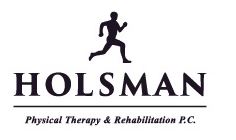Balance: How to Improve It
What is Balance Disorder and Most Effective Treatments?
A balance disorder is a medical condition that makes a person feel dizzy or unsteady. If you’re sitting, standing, or lying down, you may feel like you’re moving, floating or spinning. When you walk, you may feel like you’re tipping over.
Everybody has the dizzy spell from time to time. However, the word “dizziness” can also mean various things to various people.
For one, dizziness can refer to the fleeting feeling of haziness, but for another, it could mean an extreme sensation of turning (vertigo) that can last long. A balance disorder profoundly affects a person’s daily activities and trigger emotional and mental hardship.
Signs and Symptoms of a Balance Disorder
Vertigo or dizziness
Falling or feeling that you’re going to fall
Staggering as you try to step and walk
Faintness, lightheadedness, or a floating feeling
Blurry vision
Disorientation or confusion
Other possible symptoms of a balance disorder are nausea, vomiting, diarrhea, changes in the blood pressure and heart rate, panic attacks, anxiety, and fear. These symptoms do come and disappear over a short period or may also last for hours to days. They can even result in depression and fatigue.
Causes of Balance Disorder
Medications
Head injury or any forms of injuries from falls
Ear infection
Low blood pressure
Problems affecting visual or skeletal system like muscle imbalance and arthritis
Age
Treatments for a Balance Disorder
The treatment for a balance disorder can be wide-ranging considering that the condition is due to various disorders. Some of the preferred treatments of a balance disorder include:
Gait training can help a lot in dealing with a balance disorder. It may help enhance your ability to stand and walk. Your physician may suggest it if you have been dealing with an injury or a disease. It can enhance your posture and balance and strengthen your joints and muscles to reduce falls.
SoloStep overhead track and harness is a system designed to protect you from falling. This system creates a secure environment for strength, balance, and gait training.
Sometimes, the treatment of a balance disorder depends on the treatment used for another medical condition – it can be a stroke, multiple sclerosis, or an ear infection. Other medical conditions that can also lead to a balance problem should be treated specifically.
Lifestyle and diet changes
If you have Meniere’s disease, your doctor will advice dietary changes like reducing sodium intake as it can help reduce the signs of dizziness.
Treatment of inflamed inner ear. This type of treatment for conditions like vestibular neuronitis and labyrinthitis. These medical conditions can be cured with anti-inflammatory medicines like corticosteroids.
Certain aminoglycoside antibiotics like streptomycin and gentamicin may also help in treating a balance disorder due to Meniere’s disease.
Streptomycin injections combined with the use of gentamicin straight into your inner ear are also useful for their capability to affect the hair cells within your balance system. Gentamicin also has a negative effect on the hair cells of your cochlea that results in hearing loss.
Some drugs can also help in dealing with a balance disorder. For instance, betahistine can help ease the symptoms in Meniere’s disease. Diuretics such as hydrochlorothiazide can also be useful.
Other medicines such as sedatives for dizziness, such as lorazepam which does not ease the symptoms but helps the patients survive with the sensation. Some medicines that work on motion sickness might be used. It includes drugs classified as anticholinergics and antihistamines.
